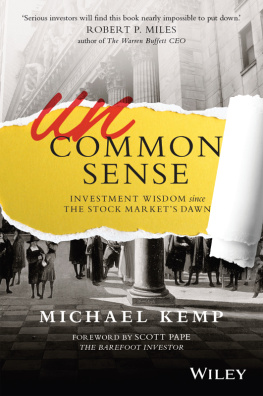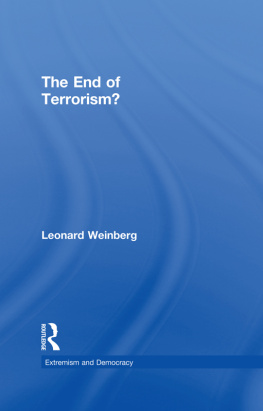
Bombs, Bullets and Bread
The Politics of Anarchist Terrorism Worldwide, 18661926
MICHAEL KEMP

McFarland & Company, Inc., Publishers
Jefferson, North Carolina
LIBRARY OF CONGRESS CATALOGUING DATA ARE AVAILABLE
BRITISH LIBRARY CATALOGUING DATA ARE AVAILABLE
e-ISBN: 978-1-4766-3211-7
2018 Michael Kemp. All rights reserved
No part of this book may be reproduced or transmitted in any form or by any means, electronic or mechanical, including photocopying or recording, or by any information storage and retrieval system, without permission in writing from the publisher.
Front cover: Mug shot of French anarchist mile Henry, 1894
McFarland & Company, Inc., Publishers
Box 611, Jefferson, North Carolina 28640
www.mcfarlandpub.com
BREAKbreak it open; let the knocker rust;
Consider no shalt not, nor no mans must;
And, being entered, promptly take the lead,
Setting aside tradition, custom, creed;
Nor watch the balance of the hucksters beam;
Declare your hardest thought, your proudest dream;
Await no summons; laugh at all rebuff;
High hearts and youth are destiny enough.
The mystery and the power enshrined in you
Are old as time and as the moment new;
And none but you can tell what part you play,
Nor can you tell until you make assay,
For this alone, this always, will succeed,
The miracle and magic of the deed.
John Davidson, To the Generation Knocking at the Door, December 1912
Preface
In his dissection of the British Empire, the travelogue Following the Equator, Mark Twain stated, The very ink with which all history is written is merely fluid prejudice. This aphorism has driven the creation of the volume before you.
Between the nineteenth and twentieth centuries a wave of terrorism was unleashed upon the globe. This surge was quickly ascribed to Anarchist proponents of the concept of propaganda of the deed. In 1857, the Italian revolutionary and libertarian Socialist Carlo Pisacane published his Political Testament, in which he argued that ideas spring from deeds and not the other way around. The accepted wisdom is that the concept of direct action influencing social change, as originally envisioned by Pisacane, was embraced by Anarchist luminaries such as Mikhail Bakunin and was responsible for much of the carnage that followed. Between the 1860s and 1930s, supposed Anarchists were involved in a succession of bombings, assassinations, and attempted attacks through much of the world. Indeed, it is arguable that in public consciousness of the time, Anarchism was effective shorthand for terrorism, and to hold Anarchist political beliefs was to be a terrorist. During the peak of this first wave of propaganda of the deed, international newspapers, together with concerned readers, governments, and law enforcement officials, often described the attacks by supposed Anarchists as part of a global conspiracy. History, however, does not support this formidable myth.
Before continuing with this discussion, it is worth dissecting the use of the term terrorism itself. Originally stemming from the French terrorisme, which itself drew from the Latin verb terrere (meaning to frighten), the historical root lies with the Society of the Friends of the Constitution (or Jacobins, as they were more commonly known), which came to power in France in 1792. For the next two years, the Jacobin state, under the leadership of Maximilien Robespierre, unleased a wave of retribution against its opponents that included public executions, the formation of a powerful secret police force, and the restriction of human and political rights. These draconian measures were remembered by the French populace following Napoleon Bonapartes rise to power, and the words terrorist and terrorism became terms of abuse. Initially, terrorism referred to the abuse of state power; however, these semantic roots have become gnarled and twisted in our modern age. Although there is little unified agreement on the definition of these terms, modern usage is directed toward actions or activities that utilize unlawful or extralegal intimidation or violence (typically against civilians) in pursuit of political aims, usually resulting in mass casualties or injuries. With the exception of a few instances in which civilians were attacked directly by Anarchists (most notably the attacks conducted by mile Henry), the use of the word terrorism in the title of this book may seem somewhat overstated. Typically the attacks engaged in by active proponents of propaganda of the deed belong to a history of terrorism that, in our own age of televised mass carnage, is forgotten. It can be argued that late nineteenth- and early twentieth-century Anarchists who engaged in attacks had more in common with the carefully meditated attacks of Hassan-i Sabbah and his Fedayeen, who were responsible for a series of assassinations (hence the word) in eleventh-century Persia (now Iran). The attacks detailed in this volume do not fit neatly into the original definition of terrorism as being representative of state actions or a modern definition of attacks that result in mass civilian casualties. Instead, they belong to a seemingly anachronistic definition, in which true political believers sought to generate widespread societal change through the use of force against the state (or the bourgeois members thereof).
A number of specific aims were foremost in my mind during the writing of this volume. Principally, I wished to remember the words of Twain and consider how the histories of the time period that this book examines have been constructed (and by whom). Typically, when considering the activities of supposed Anarchists and adherents of propaganda of the deed, historians have dwelled upon the acts themselves, not the actors. It is my humble hope that this book can help to fill this void. A cursory examination of some of the scant biographies of those responsible for terrorist outrages shows in many cases that those involved were not Anarchists at all. Rather, Anarchy was conflated with Socialism, Nihilism, Nationalism, and (in some cases) the actions of those suffering from mental or physical illness or those employed by police forces in the dual capacities of spy and agent provocateur. The major aim of this publication is to provide biographical data of the attackers to create a more complete picture that will allow for a deeper understanding of what, beyond their political beliefs, prompted their attacks.
Attacks by supposed Anarchists in the late nineteenth and twentieth centuries are often thought to have been limited to Europe and America. This is a fundamentally incorrect assumption. Attacks in Asia, Australia, Europe, the United States, and Russia are documented in this publication to provide an indicator of the international scope of Anarchist terrorism. It should be noted, however, that in preparing this book for publication, I have been forced to make difficult choices regarding what information to include. To my shame, I have not been able to include details on tertiary attackers or their actions that would further indicate the international nature of the threat. These include Anton Nilson, a militant Swedish Socialist and later Communist responsible for a ship bombing in 1908; Michele Angiolillo Lombardi, responsible for the assassination of the Spanish prime minister in 1897; Luigi Lucheni, who assassinated Empress Elisabeth of Austria in 1898; and Bhagat Singh, who bombed the Indian Central Legislative Assembly in 1929. Additionally, I do not provide details regarding the wave of bombings that swept through the United States in 1919 inspired by followers of the Italian Anarchist Luigi Galleani, the
Next page













